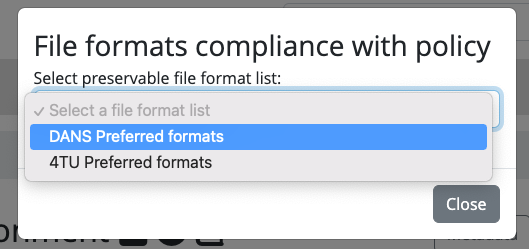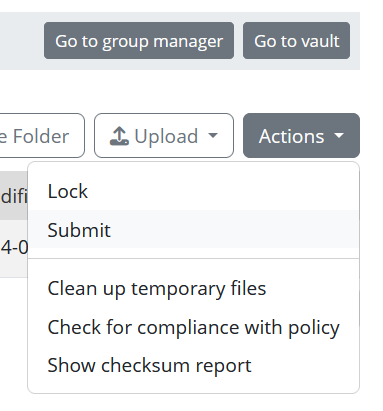Archiving data
Archiving data
If you choose to archive a part of your data, Yoda will make a copy of the data to the archive (also known as “Vault”) of your project space, where it will be retained unchanged during its retention period.
After archiving your data, you can optionally publish it, thus making your data findable. If you classify your data as open - freely retrievable, then the data itself can be downloaded anonymously by any third party.
This page contains information about how to create a data package, how to submit a data package to the vault, how the data package will be evaluated after submission, and how to manage archived data packages.
Creating a data package
The data in your research data compartment is a set of files and folders.
If part of this data is to be archived, it is important that it has a logical folder structure, that it has appropriate metadata, and that it contains documentation which describes the data in more detail (such as a readme.txt file or codebook files). This ensures that other researchers will be able to understand the semantics of the data, the way in which it was collected or generated, and the conditions for (re)use.
File formats
A best practice to keep your datasets re-usable is to store your data in open formats. DANS maintains a list of open file formats. If using only open file formats is not feasible, consider exporting each file in a vendor-specific format to an open file format, and storing the exported open format version along with the vendor-specific format version.
You can check in Yoda if you are in compliance with either the DANS Preferred formats or the 4TU Preferred formats by pressing the “Actions (Check for compliance with policy)” button.


Submitting a data package to the Vault
In order to submit a data package to the vault, you need to be either a group manager or a regular member of the group that contains the data.
First, navigate to the folder you want to archive in the Yoda portal. Ensure that you are in the folder which you want to submit to the vault. Check that all mandatory metadata has been entered in the metadata form of the folder.
Now press the “Actions (Submit)” button.

If any mandatory metadata is missing, the system will tell you what metadata still needs to be entered. If all required metadata is present, the system will lock the folder and its subfolders during the archiving process. This ensures that data in the folder can no longer be changed. Once the system has copied all data to the vault, the lock will be removed automatically.
Data manager assessment
The data manager will check that the data package is self-evident for other researchers, and will check for compliance with privacy rules and regulations.
The data manager can either approve the data package for archiving or suggest improvements.
If the status of your data package changes you will receive a notification in the portal. You can also choose to get notifications via email, see this page.
Managing archived data packages
The vault of your group becomes visible in the Yoda portal once it contains at least one data package. Everyone with access to your group research folder also has read-only access to the vault of your group.
If the research folder has been deleted, you can request access to the archived data package via the data manager. If the data package has been published it can be retrieved via data catalogs such as DataCite.


